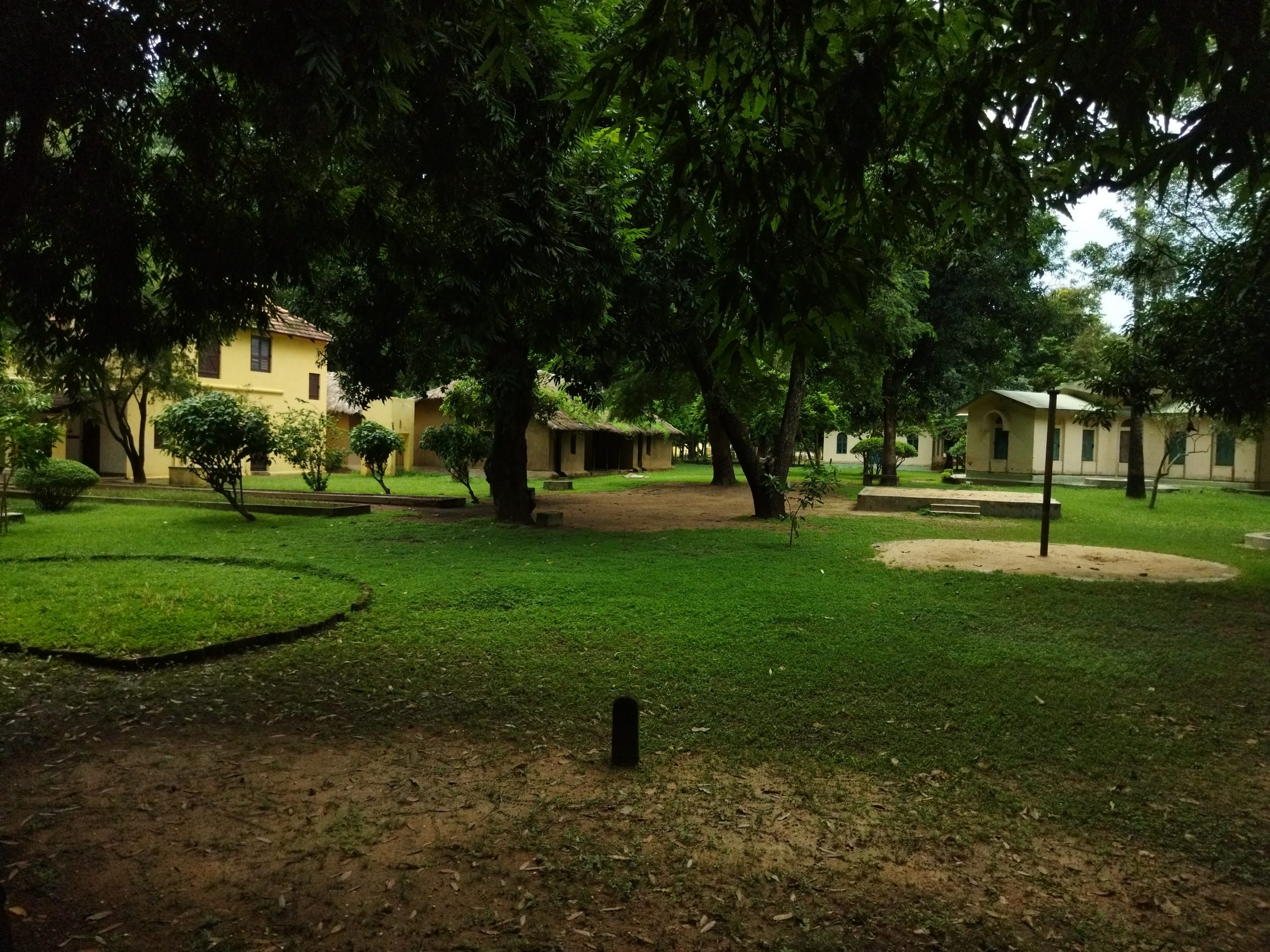Discover Santiniketan: The Charm of Bengal
A unique blend of education, art, and culture, nestled in the serene landscapes of West Bengal – Welcome to Santiniketan.com! A website that covers the town that embodies the rich legacy of art, literature, and education. As we journey through the captivating narratives of Santiniketan, we invite you to experience a place where nature and culture intertwine seamlessly. Allow us to guide you through the intriguing history, remarkable landmarks, vibrant culture, and academic excellence define this extraordinary destination – Shantiniketan.
A Sanctuary of Art, Literature, and Education
Situated in the tranquil Bolpur subdivision of Birbhum district in West Bengal, India, Santiniketan stands as a beacon of the vision and contributions of Maharshi Devendranath Tagore and his illustrious son, Rabindranath Tagore. Here, Rabindranath Tagore realized his dream of a university town, leading to establishing Visva-Bharati University, an institution of national importance and a Central University.
Beyond its academic and cultural significance, Santiniketan captivates visitors with its breathtaking natural beauty. Lush green forests, sprawling fields, and a serene environment create an idyllic setting that exudes tranquility. As you explore Santiniketan, prepare to be enthralled by the harmony between nature and humanity. This harmony inspired Rabindranath Tagore’s creative spirit.
Location
Situated at an average elevation of 56 metres (187 feet), Shantiniketan is flanked on two sides by the rivers, the Ajay and the Kopai. Santiniketan earlier had an extensive forest cover, but substantial soil erosion gave certain areas a barren look, the resulting phenomenon is locally known as “khoai.” However, as a result of the consistent efforts by botanists, plants and trees from all over India flourish in parts of the town. Although the overall environment of the surrounding areas has changed with time, the core area of Santiniketan has retained its closeness with nature.
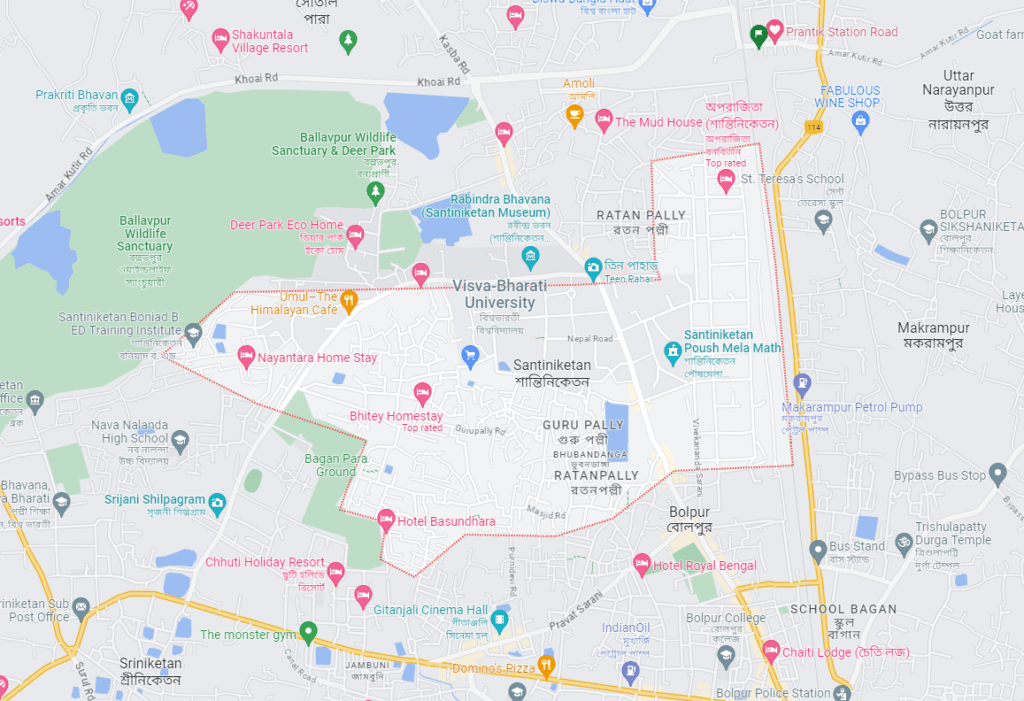
In the 2011 census, Santiniketan is not identified as a separate place. On the map of Bolpur-Sriniketan CD block on page 718 of the District Census Handbook Birbhum (Part A), the area occupied by Santiniketan is shown as a part of the Bolpur municipal area, and Sriniketan is shown as a part of Surul, a census town.
The intriguing History of Santiniketan

Let’s journey back to the year 1863, when Debendranath Tagore embarked on a path that would forever alter the destiny of a small village. With visionary foresight, Debendranath secured a permanent lease for 20 acres (8.1 hectares) of land, nestled amidst the folds of nature’s embrace. This land was not just any parcel; it was a canvas waiting to be painted with dreams and aspirations.
Amidst this modest expanse, two chātim trees stood sentinel, casting their shadows upon the land. These trees, steeped in history and symbolism, bore witness to the birth of a transformative vision. The lease came from the hands of zamindar Bhuban Mohan Sinha, who unwittingly laid the foundation for Santiniketan’s illustrious journey.
The land leased by Debendranath was more than just soil; it was a den for a gang of notorious dacoits. A tale of contrasts emerged as the denizens of this land, once steeped in infamy, found a new purpose under the benevolent guidance of Debendranath. With the leader of the gang surrendering to his wisdom, a unique partnership formed—one that aimed to transform not only the land but also the lives it touched.
Guided by a shared vision, Debendranath and his newfound allies embarked on the noble task of developing the land. The landscape metamorphosed as they collaborated to shape a brighter future. A guest house emerged from the hands of dedication and hard work—a testament to the power of transformation. Named Santiniketan, this guest house stood as a beacon of hope and a harbinger of change.
You can read more about the History of Santiniketan here.
The Tagore Family
Shantiniketan, founded by the Tagore family, is a renowned institution associated with literary and educational excellence. The Tagore family’s influence extended over generations, shaping the institution’s growth and impact. Below is a snapshot of their influence in shaping Santiniketan.
- Shantiniketan was established by Rabindranath Tagore and his father Debendranath Tagore.
- Rabindranath Tagore’s significant literary works were composed at Shantiniketan.
- Rathindranath Tagore, Rabindranath’s son, played a pivotal role in the institution’s leadership after Rabindranath’s passing.
- In 1951, Visva Bharati transitioned into a central university with Rathindranath as the first vice-chancellor.
- Pratima Devi, Rathindranath’s wife, had a strong connection with Visva Bharati.
- Mira Devi, Rabindranath’s youngest daughter, lived at Malancha in the Ashrama and passed away in 1969.
- Krishna Kripalani, husband of Mira Devi’s daughter, taught at Santiniketan and wrote a celebrated biography of Tagore.
- Dwijendranath Tagore, Rabindranath’s eldest brother, spent his final years at Santiniketan.
- Dinendranath Tagore, Dwijendranath’s grandson, served as the principal of Sangit Bhavana and was associated with Cha chakra.
- Indira Devi Chaudhurani, daughter of Satyendranath Tagore, led Sangit Bhavana and briefly acted as vice-chancellor.
- Supriyo Tagore, great-grandson of Satyendranath, was a prominent figure in Patha Bhavana and now oversees Sisu Tirtha.
- Sudripta, Supriyo Tagore’s son, is establishing an educational institution near Santiniketan, reflecting Rabindranath’s ideals.
This highlights the Tagore family’s deep connection to Santiniketan, their contributions to education and culture, and the ongoing legacy through subsequent generations.
You can read more about the Rabindranath Tagore’s family here.
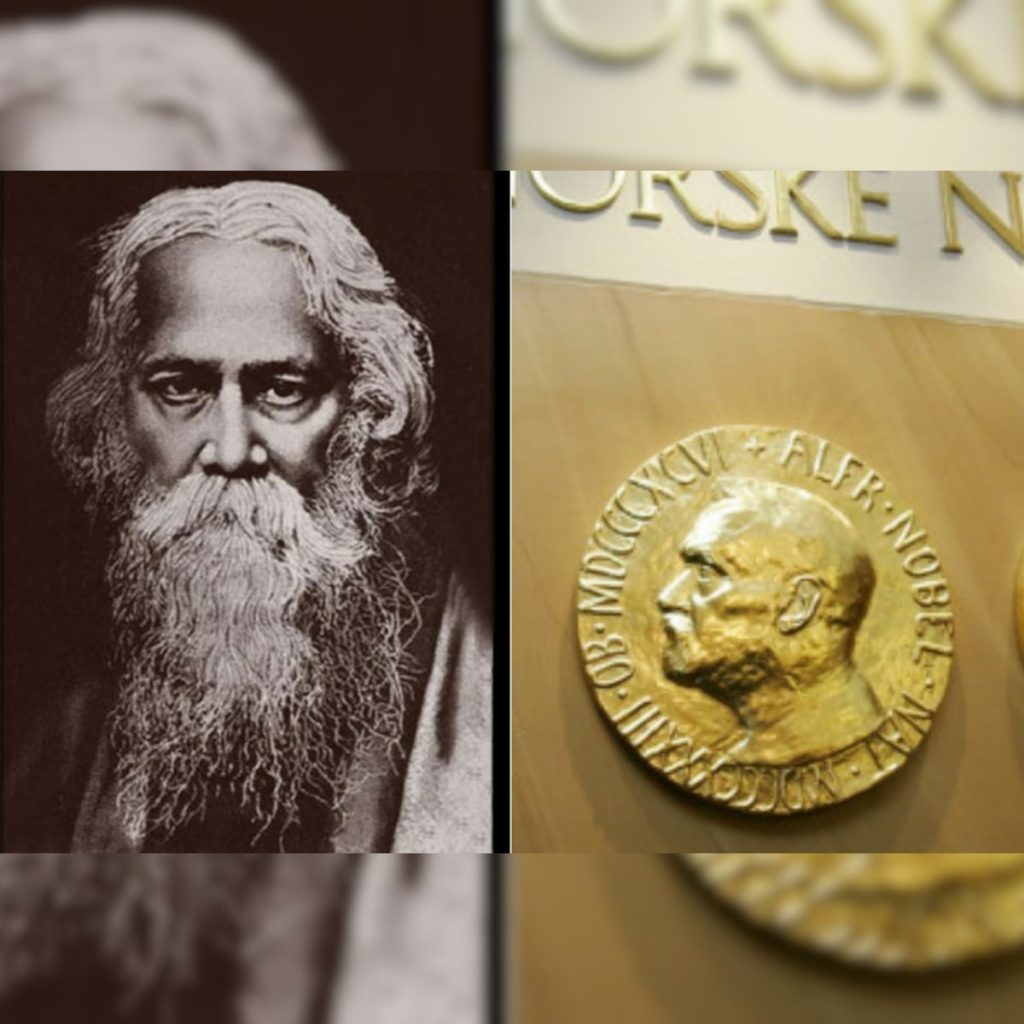
An Epicenter of Education
As a university town, Santiniketan offers a plethora of educational opportunities. Visva-Bharati University serves as the educational focal point, providing various undergraduate and graduate programs in humanities, sciences, and education. Emphasizing the importance of language and cultural studies, Sangit Bhavana offers courses in Rabindra Sangit, Hindustani classical vocal, sitar, esraj, tabla, pakhawaj, Kathakali dance, and Manipuri dance. On the other hand, Kala Bhavana offers courses in painting, murals, sculpture, graphic art, design, and art history.
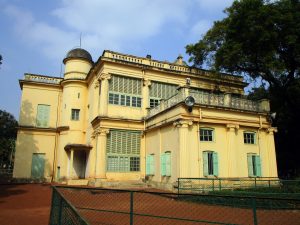
Moreover, Bhasa Bhavana and Vidya Bhavana provide comprehensive language courses in various languages such as Arabic, Persian, Bengali, Chinese, Hindi, Japanese, Sanskrit, and more. With their diverse offerings, these academic institutions contribute to Santiniketan’s reputation as a hub of intellectual growth and cultural exchange.
How to Reach Santiniketan: Effortless Travel Guide
Unravel the mystique of Santiniketan, a captivating haven of art, culture, and heritage nestled in the heart of West Bengal, India. This comprehensive travel guide reveals the most seamless ways to reach this idyllic destination, ensuring your journey is as enchanting as your destination itself.
By Air: Embracing Convenience
For those seeking swiftness, the skies beckon. The proximity of Kazi Nazrul Islam Airport (RDP IATA) in Durgapur makes it a viable option for air travel enthusiasts. However, to embrace a wider range of flight options and smoother accessibility, Netaji Subhas Chandra Bose International Airport (CCU IATA) in Kolkata stands as the preferred gateway. Immerse yourself in comfort as you soar towards the Santiniketan experience.
Embarking on a Railway Odyssey
Indulge in the romance of rail travel as you embark on a scenic journey from Kolkata, a city that resonates with history and modernity. The diverse range of travel times, spanning from two to three hours, caters to your departure point, making the rail option versatile and accommodating.
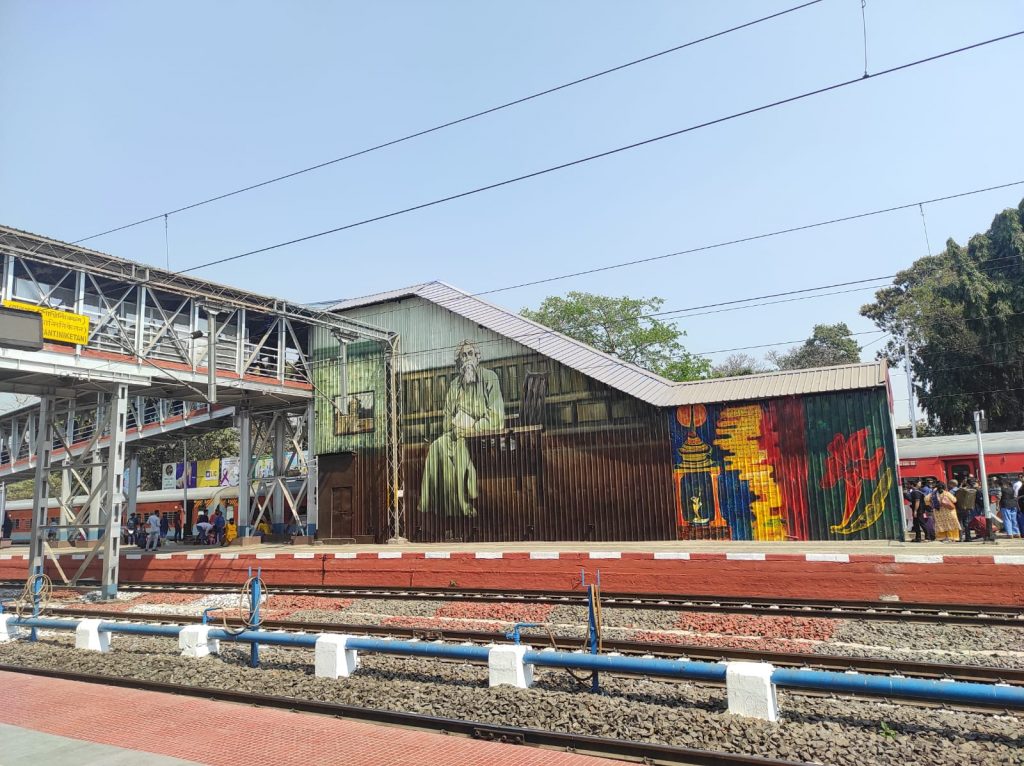
The Speed Stars: Vande Bharat Express and Shatabdi Express
For those drawn to velocity, the Vande Bharat Express and Shatabdi Express offer a swift expedition. The HWH NJP Vande Bharat Express, a non-stop marvel, stands as the epitome of rapidity, whisking you away to your destination. Choose Shatabdi Express for a blend of speed and comfort, ensuring you arrive in Santiniketan rejuvenated and ready to explore.
A Leisurely Sojourn: MEMU Local Trains
Should you be inclined towards a leisurely pace that lets you savor every passing landscape, the MEMU local trains present themselves as the perfect choice. These trains not only transport you but also allow you to absorb the beauty that surrounds you.
Railway Stations at Santiniketan
Two primary railway stations facilitate your journey to Santiniketan:
- Bolpur Shantiniketan ER (station code: BHP): This station stands as a nexus of connectivity, ushering you into Santiniketan’s embrace. Commence your voyage on the Gana Devata Express, or opt for the fastest route aboard the HWH NJP Vande Bharat Express. The HWH NJP Shatabdi Express is another option that ensures both convenience and rapidity.
- Prantik ER: This station opens its arms to select express and passenger trains, providing an alternative gateway for your voyage.
Navigating the Roads: By Bus and Car
Seamless Bus Connections
Santiniketan’s warm embrace extends to its well-connected bus routes, allowing you to approach from various directions. Embark on a journey from Kolkata by hopping onto the Kolkata-Asansol or Kolkata-Suri bus. If your path aligns with the former, disembark near Panagarh, while the latter guides you to Ilambazar. From there, a connecting bus will seamlessly transport you to Santiniketan’s heart.
Crafting a Road Trip: The Picturesque Route
For the intrepid souls who revel in the freedom of the open road, the 212 km (132 mi) drive from Kolkata awaits. Skilled drivers can conquer this route in approximately 3 hours, embracing the scenic charm that accompanies the journey.
Begin your odyssey from Dankuni, joining the Durgapur Expressway (NH 19, formerly NH 2). As you venture forth, Saktigarh, Bardhaman, and Panagarh grace your path. Panagarh, with its Darjeeling More, signals a right turn. Traverse the Ajay river via the expressway, where Ilambazar emerges on the horizon. A turn towards Bolpur guides you onwards. At the crossroads of Santiniketan-Sriniketan junction, known as Surul More, take a left turn to finally arrive at Santiniketan’s embrace.
Alternatively, the NH 114 route via Talit-Guskara-Bhedia-Surul More presents a swifter and shorter alternative, seamlessly linking Kolkata to Santiniketan’s allure.
Effortless Charm Awaits
As you absorb this comprehensive travel guide, the path to Santiniketan unfurls before you. Whether you choose the wings of air travel, the romance of rail journeys, or the liberty of the road, your voyage to Santiniketan promises to be an experience of ease and allure. Embrace the charm of this iconic destination as you step into its embrace, leaving behind the ordinary and venturing into the extraordinary.
Weather and Best Time to Visit
As you embark on your journey to Santiniketan, be prepared to immerse yourself in the kaleidoscope of seasons that this enchanting town offers. From the gentle warmth of summer to the tranquil coolness of winter, and the mesmerizing allure of monsoon, each season contributes to the town’s vibrant character. Allow Santiniketan’s climate to guide your experience, as you discover its artistic heritage, cultural charm, and the beauty that thrives within every season’s embrace.
Embracing the Seasons
The Warm Embrace of Summer
When the sun takes center stage, Santiniketan’s temperatures gracefully rise to around 35-42 °C, inviting a gentle warmth that envelops the surroundings. Summer’s reign spans over three months, embracing March, April, and May in its balmy grasp. Nature awakens, flora unfolds, and the landscape transforms under the nurturing touch of the sun.
Winter’s Tranquil Touch
As the sun’s intensity softens, Santiniketan experiences the soothing caress of winter. Temperatures descend to a comforting 10-15 °C, creating an ambiance of coziness and reflection. The winter months, spanning December, January, and February, invite you to don your scarves and embrace the crisp air as you explore the town’s artistic and cultural treasures.
Monsoon Magic
June, July, August, and September usher in Santiniketan’s monsoon season, a time of transformation and rejuvenation. Heavy rainfall dances upon the land, painting the surroundings in vibrant hues. The rhythmic pitter-patter of raindrops accompanies your journey, adding a touch of enchantment to the atmosphere. Embrace the beauty of nature as it refreshes and renews the earth.
The Year-Round Tapestry
As the seasons gracefully unfold, Santiniketan weaves a tapestry of temperatures and sensations that capture the essence of each moment. The average annual temperature stands at 26.2 °C, providing a comfortable backdrop for your explorations and discoveries. Throughout the year, approximately 1480 mm of rain graces the land, nurturing the landscape and painting it in hues of life.
Embrace Santiniketan’s Climate
Santiniketan’s climate offers a delightful blend of warmth, coolness, and the occasional embrace of raindrops. As you venture into this enchanting realm, be prepared to experience the subtle variations that each season brings.
Accommodation and Local Cuisine
Santiniketan offers various accommodation options catering to different budgets and preferences. From guest houses to hotels and homestays, visitors can choose from various options located close to the university and other landmarks. These accommodations ensure easy access to the town’s principal attractions, making your stay comfortable and convenient.
The local cuisine of Santiniketan is a compelling fusion of Bengali and international flavours, highlighting the use of fresh, locally sourced ingredients. Traditional dishes such as fish curry, lentil dal, Sandesh (a delightful sweet), and roshogolla (a spongy dessert) tantalise the taste buds and reflect the region’s culinary heritage. Additionally, Santiniketan is home to various restaurants and cafes that offer a diverse range of cuisines, including Indian, Italian, and Chinese.
Unforgettable Experiences Await
Getting Around Santiniketan: Easy Ways to Explore
Taking a Spin on Totos:
Hop on an electric rickshaw, lovingly known as “totos,” for a hassle-free and budget-friendly ride. These toto rides are all the rage now, and for good reason. While the classic cycle rickshaws are still in the mix, they might dig a bit deeper into your pocket. If you’re a tourist, keep an eye out for those crafty cycle rickshaw peddlers near the museum – some of them might take you on a merry detour to pad the bill. Stick with the seasoned riders or simply take a leisurely stroll through town. And if you need a layout rundown of the Visva Bharati complex, the online map has your back.
Cruising by Car:
Don’t always expect a hired car or taxi to pop up out of thin air. A bit of foresight can come in handy here.
Pedal Power:
For those planning to hang around for a while, snagging a bicycle from a local cycle shop is a smart move. Shelling out around ₹3,200-3,600 for a shiny new ride gives you the keys to Santiniketan’s exploration kingdom – all at your own chill pace.
Santiniketan is a town brimming with life and activities that cater to all interests. Beyond its cultural and educational offerings, the town presents numerous opportunities for exploration, adventure, and relaxation.
Festivals at Shantiniketan
In Shantiniketan, seasonal changes bring their own colors and beauties with various festivals. The emphasis in organizing these festivals is on traditional Indian forms and rituals. Numerous festivals range from Basanta Utsav and Barsha Mangal to Maghotsav and Rabindra Jayanti. Holi, the festival of colors, is celebrated in its own style at Santiniketan – it is called Basanta Utsav and welcomes the arrival of spring.
The programme starts from the morning with singing and dancing to Tagore’s tunes by the students and ends with spreading colored powders (called ‘abir’) and expression of festive wishes. After the formal Visva Bharati program, other programs follow. Barsha Mangal is celebrated with cultural programs in July–August. Ananda Bazar is a fair for handicrafts by the students, held on Mahalaya day. Prior to leaving for the puja vacations, students celebrate Sharad Utsav.
Nandan Mela marks Nandalal Bose’s birth anniversary (on 1–2 December) and is a special attraction for art lovers. Briksharopan and Halkarshan emphasize man’s closeness to nature and are held on 22-23 Shraavana (August). Maghotsab, celebrating the founding of the Brahmo Samaj, is held on 11 Magh (towards the end of January). Various anniversaries and cultural programs are organized throughout the year. 25 Baisakh (7-8 May) is the birthday of Rabindranath Tagore, but his birth anniversary is celebrated along with and subsequent to the Bengali New Year (mid-April onwards).
Santiniketan is not merely a town of academic excellence but a cultural oasis that embraces art, music, literature, and dance. Kala Bhavan, the fine arts school, entices artists and students from around the world. Its hallowed halls resound with creative expression, nurturing talents, and pushing boundaries.
Sightseeing and Shopping in Santiniketan
Sightseeing in Santiniketan is a must-do activity, allowing you to discover the town’s landmarks and cultural attractions. The Rabindra Bhavan Museum, the Uttarayan Complex, and the Kala Bhavan art school offer a glimpse into the artistic brilliance of Santiniketan. You can also explore local markets, visit temples, or enjoy a tranquil nature walk amidst the serene countryside.

Shopping in Santiniketan is a delightful experience, with many handicrafts and artistic creations available for purchase. The town is renowned for its exquisite Dokra art, Batik textiles, leather crafts, and handwoven Kantha sarees. These unique souvenirs serve as mementos of your unforgettable journey and provide support to local artisans.
Engaging in cultural events and festivals is another way to immerse yourself in the spirit of Santiniketan. The Poush Mela, celebrating the harvest season, is a vibrant festival that showcases local traditions, folk music, dance performances, and handicraft exhibitions. The Basanta Utsav, also known as Holi, is a joyous celebration of colors, music, and dance, where locals and visitors come together to revel in the festivities.
Nature enthusiasts can explore nearby destinations such as Ballavpur Wildlife Sanctuary, Amar Kutir, and the Khoai region, which boasts unique topographical features. These natural wonders offer opportunities for birdwatching, nature walks, and serene picnics amidst picturesque surroundings.
Whether you seek intellectual stimulation, artistic inspiration, or a peaceful retreat in the lap of nature, Santiniketan promises an unforgettable experience. Let this enchanting town weave its magic as you explore its cultural heritage, bask in its natural beauty, and connect with the enduring legacy of the Tagore family.
Sightseeing in and around Santiniketan
Unveiling a tapestry of heritage, culture, and natural splendor, Santiniketan beckons with a myriad of attractions, each exuding its own distinct allure. As we embark on a journey through this enchanting town, we are treated to a captivating array of remarkable spots that tell stories of the past and present:
Santiniketan is adorned with landmarks that beckon exploration and reflection.
Tagore Family Residences: Immerse yourself in history as you step into the embrace of Santiniketan Griha, Nutan Bari, and Dehali – structures seamlessly woven into the legacy of the Tagore family. Amidst the embrace of the Amra Kunja mango grove, one witnesses school classes and grand events coming to life, while a serene hillock graced by a majestic banyan tree stands as a tribute to Maharishi Debendranath Tagore’s enduring connection.
The Rabindra Bhavan Museum, a tribute to Rabindranath Tagore’s life and work, houses an extensive collection of manuscripts, photographs, paintings, and relics that glimpse the poet’s remarkable journey. The Uttarayan Complex, comprising Udayan, Shyamali, Konark, Udichi, and Punascha, is a picturesque haven designed by Rabindranath Tagore. These iconic homes were abodes for contemplation, creative pursuits, and intellectual exchanges.
Sinha Sadan: A Legacy of Heritage and Honors
Nestled within the heart of Santiniketan’s history lies Sinha Sadan, a building with deep ancestral roots. Originally part of the zamindari belonging to the Sinha family of Raipur, Birbhum, this haven of culture and intellect carries stories of generations past. The visionary Satyendra Prasanna Sinha, 1st Baron Sinha, etched his mark by generously contributing to the construction of Sinha Sadan, complete with an elegant clock tower and a resounding bell. A place where echoes of Oxford University’s honorary doctorate to the esteemed poet Rabindranath Tagore still linger, this edifice stands as a testament to the intersection of erudition and legacy.
Ballabhpur Wildlife Sanctuary: Nature’s Haven and Conservation Triumph
Venturing just 3 kilometers from Santiniketan, you’ll discover the enchanting Ballabhpur Wildlife Sanctuary, known to many as the Deer Park. Born out of a mission of conservation, this sanctuary’s inception in 1977 breathed new life into an area once plagued by soil erosion. Today, a sprawling expanse of verdant woodlands welcomes herds of graceful deer, while the canopy resonates with the melodies of a thriving avian population. What was once a land marred by nature’s forces has transformed into a sanctuary that embodies nature’s resilience and the triumph of preservation.
Amar Kutir: Where Art and Heritage Converge
Amar Kutir, meaning “my cottage,” beckons as more than just a name. Once a haven for the stalwarts of the independence movement, this haven has seamlessly metamorphosed into a vibrant cooperative society that champions arts and crafts. Poised along the tranquil banks of the Kopai River, a mere 15 kilometres (9.3 miles) from the heart of Santiniketan, Amar Kutir radiates the spirit of artistic expression. With each brushstroke and every craftsman’s touch, it honours its historical roots while paving the way for a future enriched by creativity.
Sonajhuri Haat: An Enchanting Tapestry of Culture and Craftsmanship
In the embrace of each Saturday and Sunday, the Sonajhuri Haat comes to life, nestled in proximity to Shantiniketan. This vibrant village market is more than just a place of commerce; it’s a portal into the soul of the community. As you meander through the stalls, you’ll encounter a vibrant mosaic of local handicrafts, each piece a testament to the skilled hands that brought it to life. The air resonates with the enchanting melodies of folk music, carried on the voices of tribal groups, weaving a symphony of cultural heritage. Sonajhuri Haat is not just a market; it’s a kaleidoscope of tradition, a treasure trove of wooden crafts, terracotta wonders, raw metal ornaments, Dhokra artistry, and garments that hold stories within their very threads. It beckons those who seek to immerse themselves in the vivacity of Shantiniketan’s living culture, inviting you to become a part of its enduring narrative.
Bangladesh Bhavana: A recent architectural gem, this addition stands as a seamless blend of modern design and cultural opulence. The auditorium within becomes a stage for the harmonious interplay of contemporary expressions and rich heritage.
Cheena Bhavana: Embark on a journey into the realm of Sino-Indian cultural studies, where the treasures of Chinese literature, journals, and Buddhist scriptures are unveiled within this hub dedicated to fostering historical understanding and modern connections.
Gitanjali Rail Museum: Beyond the realm of railways, this museum casts an illuminating spotlight on various facets of Rabindranath Tagore’s life. Through its opulent displays, it pays homage to the multifaceted legacy of the celebrated poet.
Gour Prangan (Sinha Sadan): Walk through the corridors of time as you explore the venerable buildings of Visva-Bharati University, a tribute to the illustrious Sinha zamindar family that has left an indelible mark on the institution.
Hindi Bhavana: A hub of Hindi studies, adorned with the artistic flair of a mural by Benode Behari Mukherjee, inviting a deeper exploration into the richness of the language.
Kala Bhavana: Step into a realm where fine arts and crafts flourish, with a college that boasts a museum brimming with sculptures, frescoes, and murals. Enriching the experience further is an art book library that adds depth to the artistic journey.
Kopai River: Nature enthusiasts and photographers converge along the picturesque banks of the Kopai River, where every corner offers a canvas for countless captivating snapshots, capturing the river’s serene beauty.
Patha Bhavana: Witness the evolution of education at this secondary school, where the traditional gurukula method harmonizes with contemporary nuances to shape young minds.
Prakriti Bhavan: Immerse yourself in the artistic marvels of nature at India’s sole nature art museum. From enchanting driftwood sculptures to an open-air garden adorned with intricate rock formations, this sanctuary of natural beauty is a sensory delight.
Rabindra Bhavana Museum: Step back in time at this museum dedicated to honoring Rabindranath Tagore. Explore the world of original manuscripts, intimate letters, and cherished artifacts, while also tracing the footprints of Tagore’s life through the five houses that nurtured his spirit.
Santiniketan Griha: On days other than Wednesdays, the cultural significance of Santiniketan Griha unveils itself, offering a glimpse into its charm and heritage.
Shilpagram: Embark on a journey to Shilpagram, located near the Wildlife Sanctuary, where the traditions of eastern and northeastern India come alive through meticulously crafted traditional handicrafts. Each art-adorned house encapsulates the unique heritage of its respective state.
Sriniketan: Enter the dream village envisioned by Rabindranath Tagore, where his ideals and spirit resonate through the very essence of the village’s ethos.
Surul Rajbari: Admire the grandeur of Surul Rajbari, the palace of the Sinha zamindars, where terracotta-carved temples stand as a testament to timeless traditions and artistic craftsmanship, merging seamlessly in a symphony of heritage.
As we explore these captivating corners of Santiniketan, we find ourselves immersed in a journey that traverses time, culture, and nature, each spot an eloquent chapter in the town’s rich narrative.
Santiniketan: On UNESCO’s World Heritage List
It has achieved a significant milestone by securing a coveted spot on the UNESCO World Heritage List. This recent inclusion marks a momentous occasion for the cultural heritage of India and the global recognition of Santiniketan’s historical significance.
The announcement of this prestigious recognition was made by the UNESCO World Heritage body underlining the importance of this new inscription: “New inscription on the @UNESCO #WorldHeritage List: Santiniketan, #India. Congratulations!”
Prime Minister of India, Narendra Modi expressed his delight at the news, emphasising the deep-rooted cultural heritage and the vision of Tagore that Santiniketan embodies. In a message shared on social media, he said, “Delighted that Santiniketan, an embodiment of Gurudev Rabindranath Tagore’s vision and India’s rich cultural heritage, has been inscribed on the @UNESCOWorld Heritage List. This is a proud moment for all Indians.”
The pride of Santiniketan extends to West Bengal Chief Minister Mamata Banerjee, who highlighted the role of the people of Bengal in nurturing this heritage site over generations. She shared her joy in a message, stating, “Glad and proud that our Santiniketan, the town of Gurudev Rabindranath Tagore, is now finally included in UNESCO’s World Heritage List. Biswa Bangla’s pride, Santiniketan was nurtured by the poet and has been supported by people of Bengal over the generations. We, from the Government of West Bengal, have significantly added to its infrastructure in the past 12 years, and the world now recognises the glory of the heritage place. Kudos to all who love Bengal, Tagore, and his messages of fraternity. Jai Bangla, Pranam to Gurudev.”
This UNESCO World Heritage recognition serves as a symbol of the profound cultural and historical significance of Santiniketan, a place where the legacy of Gurudev Rabindranath Tagore continues to inspire generations and celebrate India’s diverse heritage.

